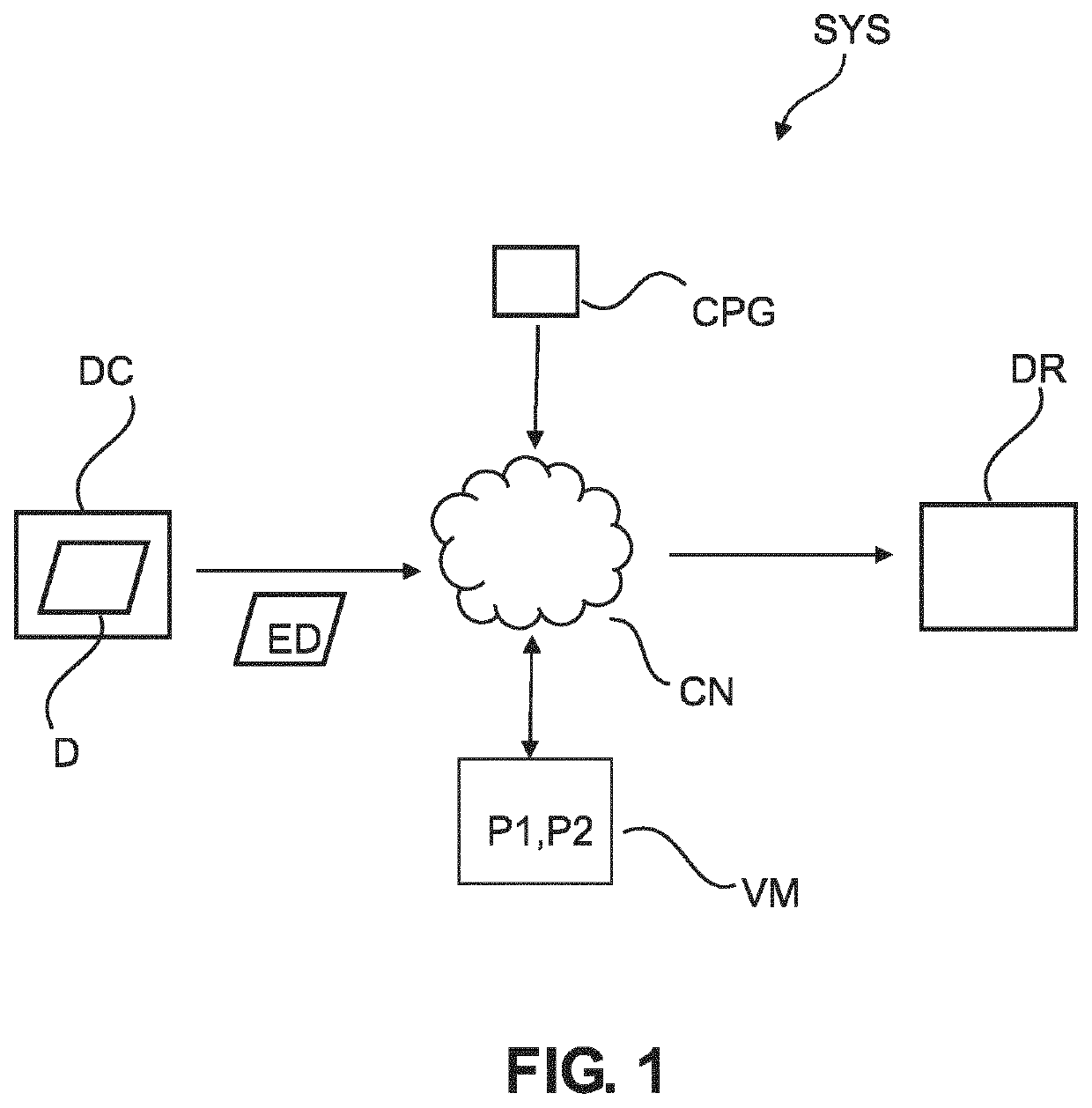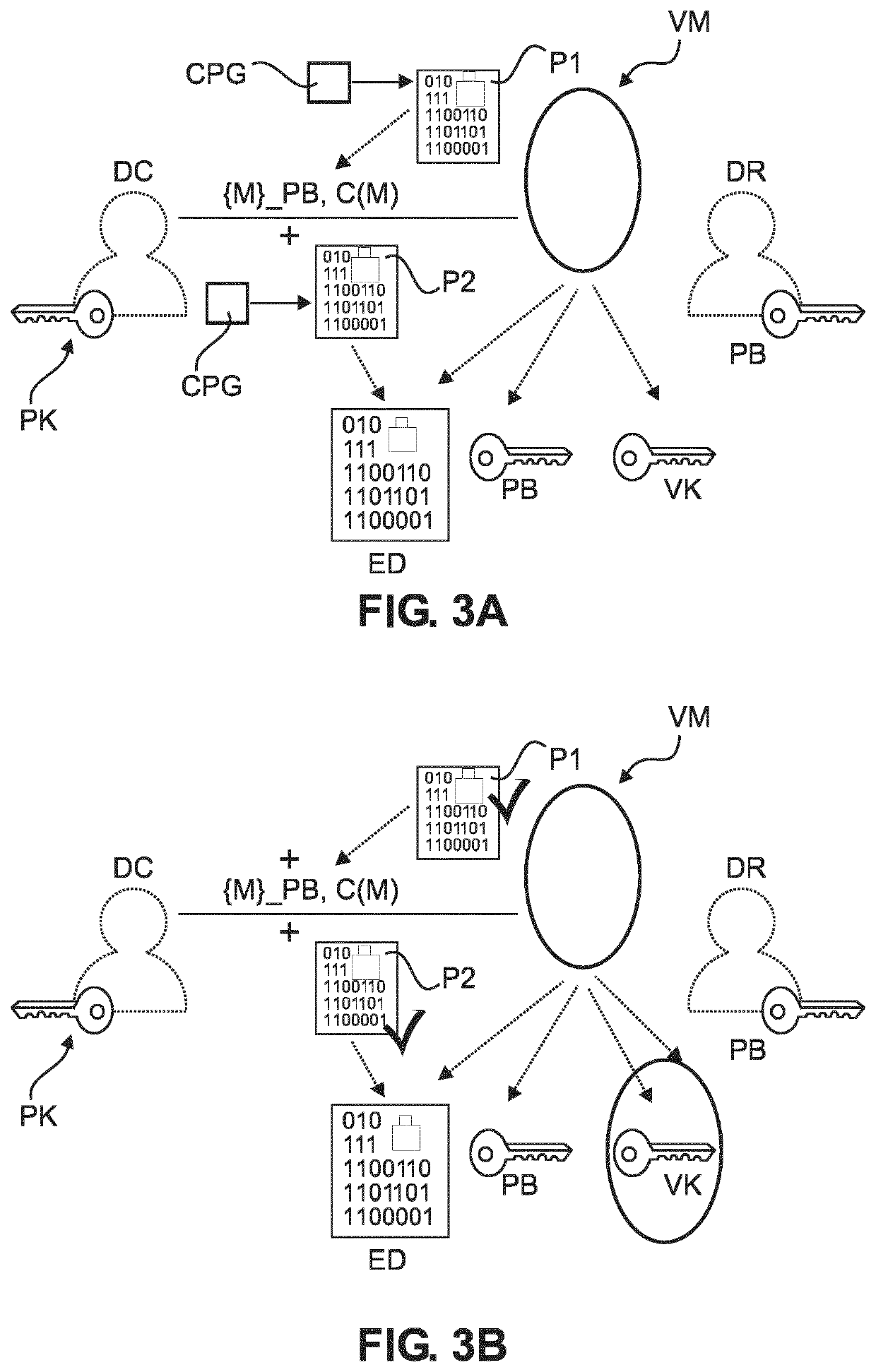Zero-knowledge contingent payments protocol for granting access to encrypted assets
a technology of contingent payments and zero-knowledge, applied in the field of cryptographic system for data exchange, can solve problems such as blind evaluation
- Summary
- Abstract
- Description
- Claims
- Application Information
AI Technical Summary
Benefits of technology
Problems solved by technology
Method used
Image
Examples
Embodiment Construction
[0057]With reference to FIG. 1, there is shown a schematic block diagram of a computer-implemented system SYS for exchange of data. More specifically, the system SYS is configured to implement a cryptographic protocol to securely exchange an asset D from a data controller DC to a data receiver DR. The data exchange is mediated by a verifier module VM. The data exchange is going forward once the VM checks that certain one or more pre-defined conditions are met. Very broadly, and as will be explained more fully further below, the cryptographic data exchange system SYS implements a zk-cryptographic proof to check the condition is or is not meet. The zk-cryptographic proof is configured to rule out, or to at least reduce the likelihood for, the data receiver DR making certain repudiation claims, such as not being able to decrypt the asset encrypted asset ED. At the same time, the system SYS use a specially adapted zk-cryptographic proof to address a certain vulnerability that Applicant ...
PUM
 Login to View More
Login to View More Abstract
Description
Claims
Application Information
 Login to View More
Login to View More - R&D
- Intellectual Property
- Life Sciences
- Materials
- Tech Scout
- Unparalleled Data Quality
- Higher Quality Content
- 60% Fewer Hallucinations
Browse by: Latest US Patents, China's latest patents, Technical Efficacy Thesaurus, Application Domain, Technology Topic, Popular Technical Reports.
© 2025 PatSnap. All rights reserved.Legal|Privacy policy|Modern Slavery Act Transparency Statement|Sitemap|About US| Contact US: help@patsnap.com



